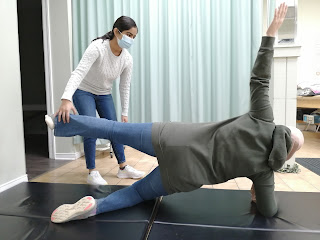How Exercise Impacts Sleep and Vice Versa

Getting enough sleep is incredibly important for our health and insufficient sleep is associated as a risk factor for type 2 diabetes, several cardiovascular diseases, obesity, poor mental health, depression, and accidents. Additionally , in general, getting 7-8 hours of sleep (for adults) is correlated with lower mortality and prevalence of disease (morbidity). Studies suggest that good sleep habits and moderate physical activity can benefit each other in a reciprocal relationship. However, about 1 in 4 Canadian adults between the ages of 18-79 years are not getting sufficient sleep (1 in 3 in adults aged 35 to 64 years). Poor sleep quality is also an issue in the Canadian population with about 50% of adults having difficulty going to sleep or staying asleep and 1 in 5 adults report their sleep isn’t refreshing. These aspects are negatively affecting the stress levels and mental health of Canadians . Among adults that report getting inadequate sleep, 36.3% have chronic stress...

